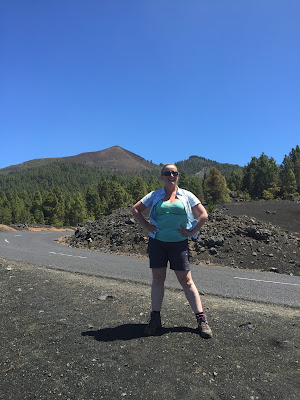Today we have swapped roles. Hannah is now learning the soil
gas sampling that I did yesterday and I will be doing the CO2 efflux
and surface temperatures using the accumulation chamber method.
The surface temperatures are pretty self explanatory. A
thermo-coupler is used with an 11cm probe and a 40cm probe. Both probes a
pushed in to soft ground and left to acclimatise, during which the ambient
temperature using a second thermo-coupler is recorded and the accumulation
chamber is set up.
The accumulation chamber equipment is set up to communicate
via Bluetooth to a PDA. The PDA is used to control the motor inside the
equipment and collect the data recorded in
situ. Once the motor has been turned on, the accumulation chamber is left
to draw in air for 10 seconds, this gives the operator time to check the
equipment is registering atmospheric CO2. After 10 seconds the
chamber is placed on the ground and made as air tight as possible, it is then
left undisturbed for 120 seconds. The data collected can be observed in real
time over the collection period and becomes significant when the regressions (R2)
exceed 0.5, the efflux is recorded as ppm/s (parts per million per second). All
the information is saved on the PDA at every site, it is also written down and
transferred to excel at the end of every day.
CO2 efflux in situ gas values measuring using the accumulation chamber method
We managed to finish a little earlier than expected so we
drove the long way back to the accommodation taking in the Taburiente caldera
visitors centre and seeing Pico de Borigoyo, the highest point of the Cumbre
Vieja volcanic rift.
Me with Pico de Birigoyo the highest point of Cumbre Vieja
Every day is an adventure!
Buenas noches de La Palma!


No comments:
Post a Comment